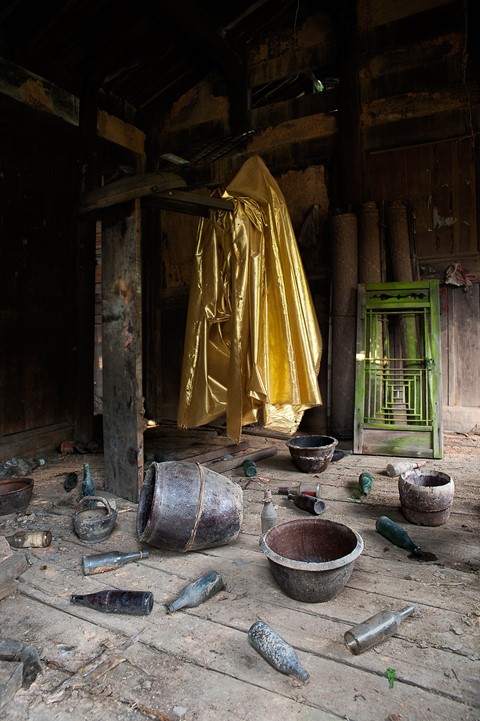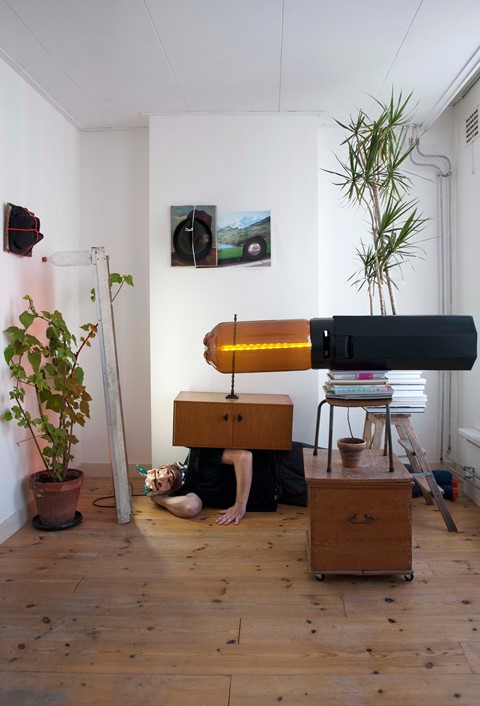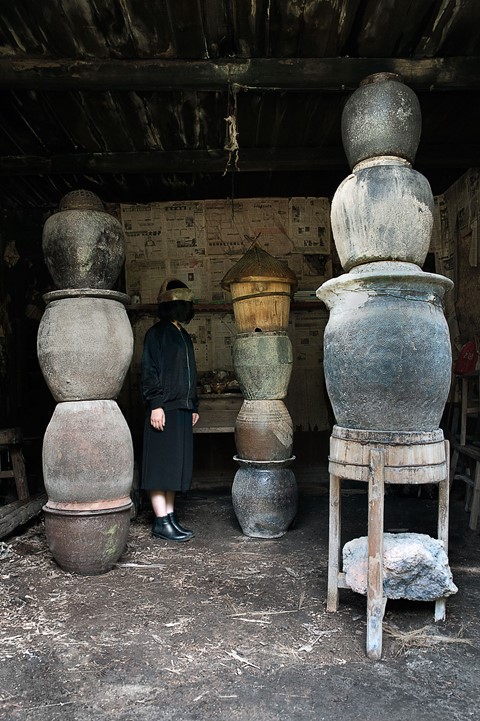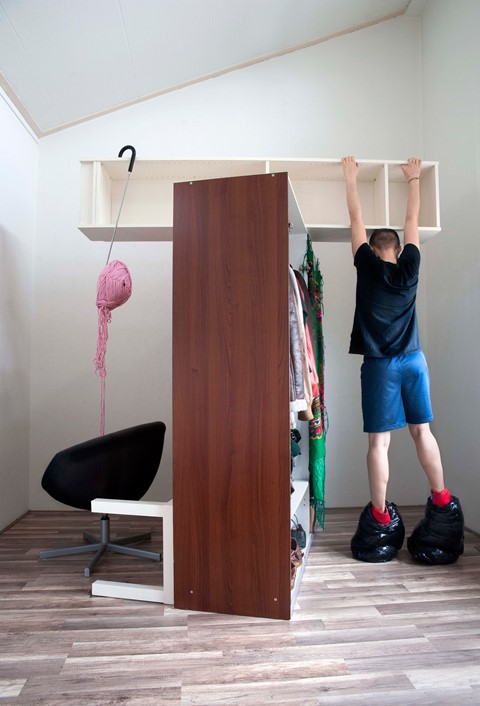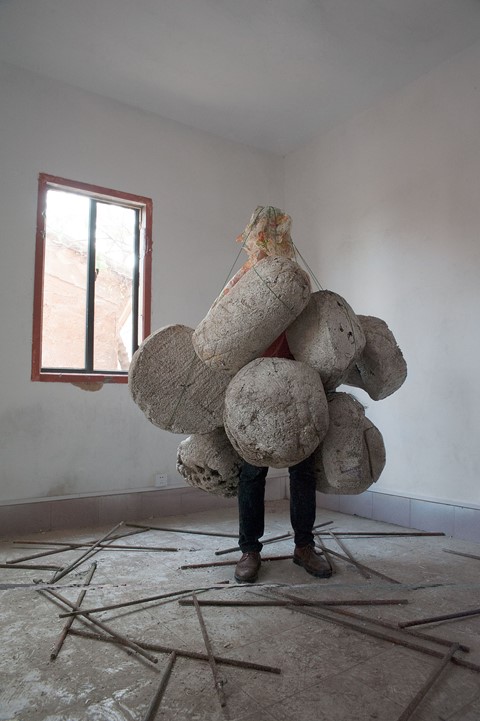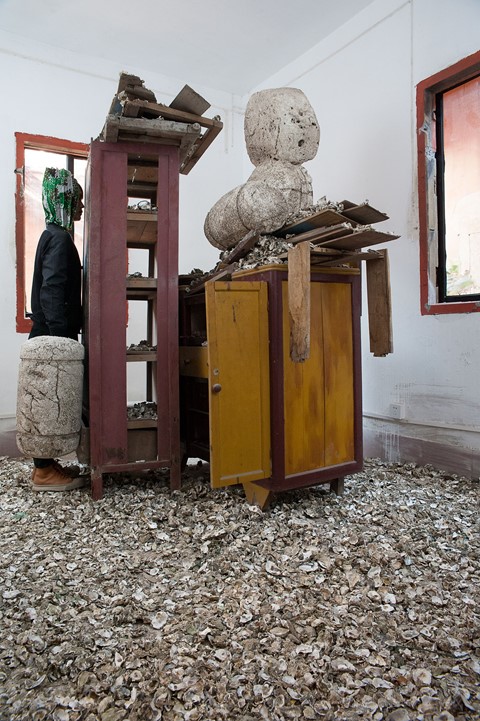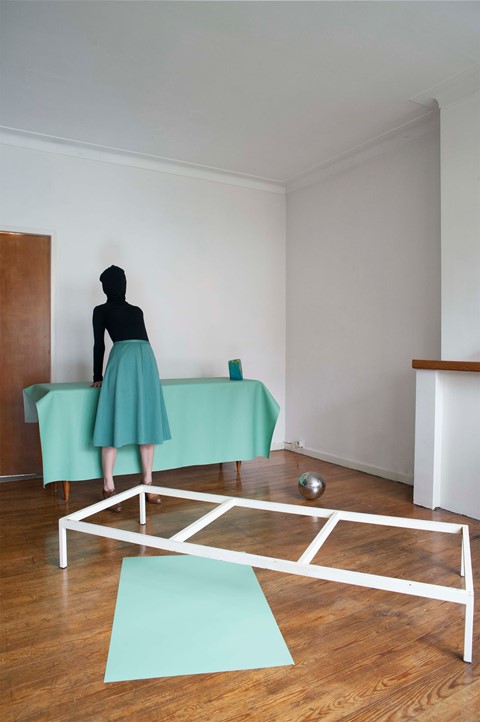In his Sculptural Interventions, Ton Zwerver creates abstract portraits out of his subjects’ belongings, and they make for strangely compelling viewing
This year AnOther Magazine partnered with Unseen Amsterdam to create a series of features around its spectacular 2017 edition. Here we celebrate three photographers we discovered there. First in this series is Ton Zwerver, represented by C&H Gallery.
The first time Dutch photographer Ton Zwerver created one of his Sculptural Interventions – so he calls the images he creates of his various subjects with their personal belongings assembled around them – he was working as a painter while studying at the Gerrit Rietveld Academy. A decorator of houses, that is – not a traditional fine artist. “I had to do some work for people, painting and those kinds of things in people’s houses,” he tells me over the phone. “We placed everything in the middle of the room with some plastic over it, and so came the idea that it could be a nice sculpture.” Sometimes haphazard and unpredictable, sometimes perpendicular and meticulously organised, the resulting photographs always make for surprising representations of their protagonists. Take the striking image of a woman in turquoise, her back arched and her face covered, standing in the centre of a wooden-floored room, for example. Or that of a floor littered with broken seashells, a dishevelled assortment of furniture piled in its centre.
Crucially, the faces of his subjects are always concealed. And yet, “in a way it becomes a portrait,” he continues. Indeed, it does. Many more Interventions ensued from this early prototype, the anonymity of the central character becoming a central theme underpinning them all, and Zwerver began to build a bank of these surreal and often absurd creations, cataloguing his acquaintances in their own spaces. “It’s more the place, the people, the atmosphere, that defines the work,” he says.
While the process has become more sophisticated over the years – nowadays Zwerver tends to visit his chosen person, usually a friend or acquaintance with something of an understanding about his work, in their chosen room a week or so before shooting, and usually brings along a mask he has made for the purpose – the essence remains the same. This is a photograph of an experience, he says, almost like the surviving record of an ephemeral performance piece. In this context, his surreal photographs – by definition never truly finished, but rather a fragment of an experience preserved on paper – become souvenirs. What could be more compelling?
